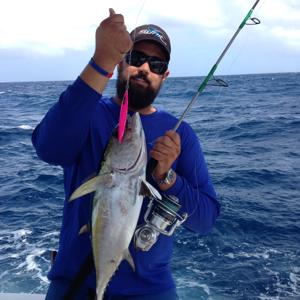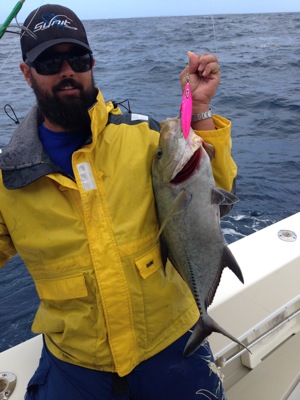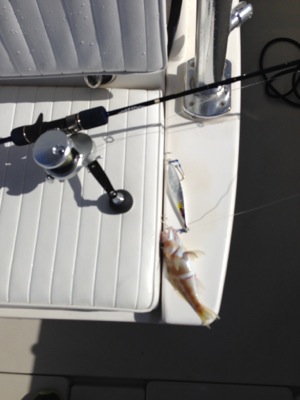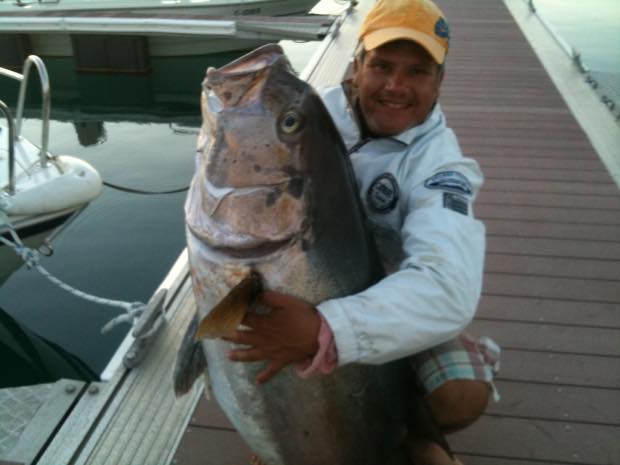High speed with Spunky 180g
Here’s Laurent from St. Martin in the Caribbean. It sounds like he found another creative adaptation to the situation.
[margin30]
[colored_box variation=”teal”]
[one_half]
Hi Totos,
Slow pitch was hard yesterday, sea was rough and currents were too strong, so I stayed on the wheel and my cousin Stephan used a 180g spunky with his high speed rod and reel ( Synit kaha 200g / new Saragosa 10000 , shimano ex8 pe 3 braid).
We had been high speed jigging for a while and the bite was definitely slow. So when I suggested to him to slow jig with a Spunky 180g we were not expecting too much. He rigged it with a single hook on top of the jig.
The result was immediate, he got 2 or 3 strikes before hooking up his 1st tuna of the day followed by a black jack and more strikes.
75% of the strikes where during the fall, the jig was swimming nice, he was trying to imitate the slow pitch techniques with his gear and I think it worked pretty good.
Cheers Totos,
Laurent
Ps: I keep on catching them smaller and smaller !!! Lol!!!!
[/one_half]
[one_half_last]
[/one_half_last]
[/colored_box]
[margin30]
Don’t be so modest Laurent. Look at the poor little fish! A perfect hook up to a jig of the same size of his own! If not a slow pitch jigger, who else can do such a stunt? It’s a high prize my friend.
It’s very true that sometimes the sea conditions just would not allow slow pitch jigging. You can’t stay vertical and the waves and the currents cancel all the subtle applications.
You chose to suggest to use Spunky. This was the wise choice. Your cousin had such a muscle spinning tackle, yet, he found tune to the jig and to the fish. That is awesome!
This is a perfect example that once you learn slow pitch principals, you can apply them to your creative tactics (doesn’t have to be slow pitch jigging) and still be effective.
But you know, Laurent, I think it’s time for you to move on to getting high pitch jigging into your repertoire.
Totos
Related Posts
Leave a Reply Cancel reply
Categories
- 1. SPJ (57)
- 1-1. Principles (9)
- 1-2. Techniques (11)
- 1-3. Setup (17)
- 1-4. FAQ (19)
- 1-5. Tackles (3)
- 1-6. Video Gallery (2)
- 2. Other Offshore Games (5)
- 3. Fishing Report (105)
- 3-1. Totos (25)
- 3-2. Readers (72)
- 4. Fish Cooking (19)
- 4-1. Iki-Jime (3)
- 4-2. The Art of Sashimi (5)
- 4-3. Recipe (7)
- 4-4. Seasoning (3)
- 5. Fishing Charter (6)
- Fish (12)







